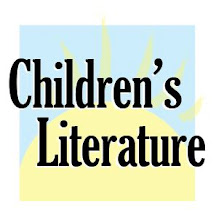"Well," I thought, the day before my first virtual author visit over Skype, "at least I won't get lost."
Not that I've ever been late for one of my regular author visits (though I did once park at the wrong school and discover my mistake when I noticed that all of the students were boys). But I've done plenty of worrying about being late—and about traffic and lunch and whether I'd get home before the babysitter needed to leave. There were always so many logistical concerns beyond the actual substance of preparing for the visit.
But this visit would be different. Using free Skype technology over the Internet, I would sit at home and talk with a group of kids at the Plattekill Public Library, 289 miles away in Plattekill, New York. I'd see and hear them over my computer, they'd see and hear me. We'd talk about
Ethan, Suspended, which they'd read as part of their summer reading program, and about the process of writing, just as with other visits. I'd show them drafts, page proofs, and other materials I use in a traditional visit, by holding them up to my computer's camera. And we could address each other, answer questions, and form the kind of connection that brings books alive for kids and makes authors remember why we started writing kids' books in the first place.
Because the kids had read my book for an out-of-school, non-graded program, I wasn't sure how deeply they would have thought about the book, how many questions they'd have, or even how many participants we'd have. But I didn't need to worry: I was thoroughly impressed with the level (and number!) of their questions, and the small turnout actually worked to our advantage, as we created an intimate, book club-like exchange despite being almost 300 miles apart.
The only technical challenge I faced was remembering to direct my "eye contact" toward the camera—in my case, at the top of my monitor—rather than toward the images of the kids that I saw in the middle of my screen. My computer turned out to have a camera and microphone built in, as I discovered in preparation for the visit. On the library's end, I believe at least one of these components was hooked up externally by an IT person, using equipment the library already had.
More challenging than the technology has been the task of persuading schools and other libraries to give virtual visits a try. Maybe they're wondering whether the technology will be "hard"—but hopefully this concern may be waning, as a recent School Library Journal article(
http://www.schoollibraryjournal.com/article/CA6705646.html?q=school+librarians+lead+pack) suggests that school librarians now "lead the social networking pack among educators." Maybe others wonder about the degree of engagement that's possible over the Internet—but for a generation that's used to socializing, studying, and connecting with people and information over the Internet, I think kids might actually open up more to an author they're meeting online, avoiding the shyness that can accompany meeting an adult in person. At the very least, I can attest that a high level of engagement is possible in a virtual visit.
And it's almost guaranteed that no one will get lost.
Pamela Ehrenberg is the author of
Ethan, Suspended (Eerdmans Books for Young Readers, 2007) and
Tillmon County Fire (Eerdmans Books for Young Readers, 2009). In addition to her
Children's Literature profile, more information on her visits, virtual and otherwise, can be found at
http://www.pamelaehrenberg.com/ and
skypeanauthor.wetpaint.com. She would enjoy hearing from other authors as well as schools and libraries about how others have experienced virtual author visits; she can be reached at PMEhrenberg@pamelaehrenberg.com. And she is happy to offer a 10 percent discount on virtual visits booked for the current school year through Children's Literature—making virtual visits even more recession-friendly.








